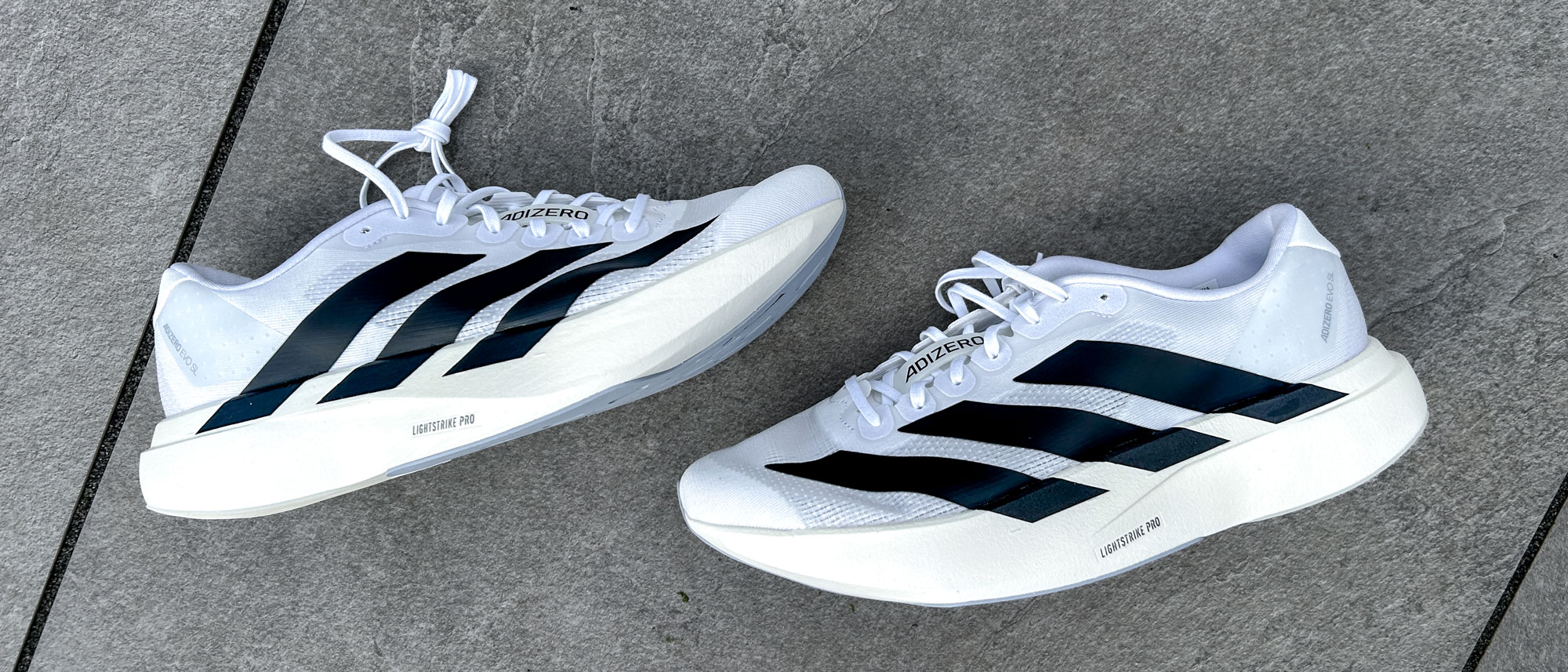Tom's Guide Verdict
The Adidas Adizero Evo SL is an excellent daily trainer that offers a rare combination of comfort and speed in a lightweight design. It works well for a wide range of runs, is good value for such an impressive shoe, and even looks great too.
Pros
- +
Lightweight
- +
Bouncy midsole foam
- +
Good value
Cons
- -
No plate for faster runs
- -
Not the most stable
Why you can trust Tom's Guide
The Adidas Adizero Evo SL is a new addition to the Adidas range, and aims to take some of the features of the Adidas Pro Evo 1 carbon plate running shoe and bring them to a lightweight daily trainer at an affordable price.
It’s one of the best running shoes I’ve tested in some time, with a versatile, comfortable ride that can handle almost any kind of run. It’s good value too, and stylish enough to wear when not running, though the pronounced forefoot rocker makes it feel a bit odd for walking around.
In my Adidas Adizero Evo SL review I’ll explain why I love it so much, and compare it to rival daily trainers from Adidas and other brands.
Adidas Adizero Evo SL review: price and availability
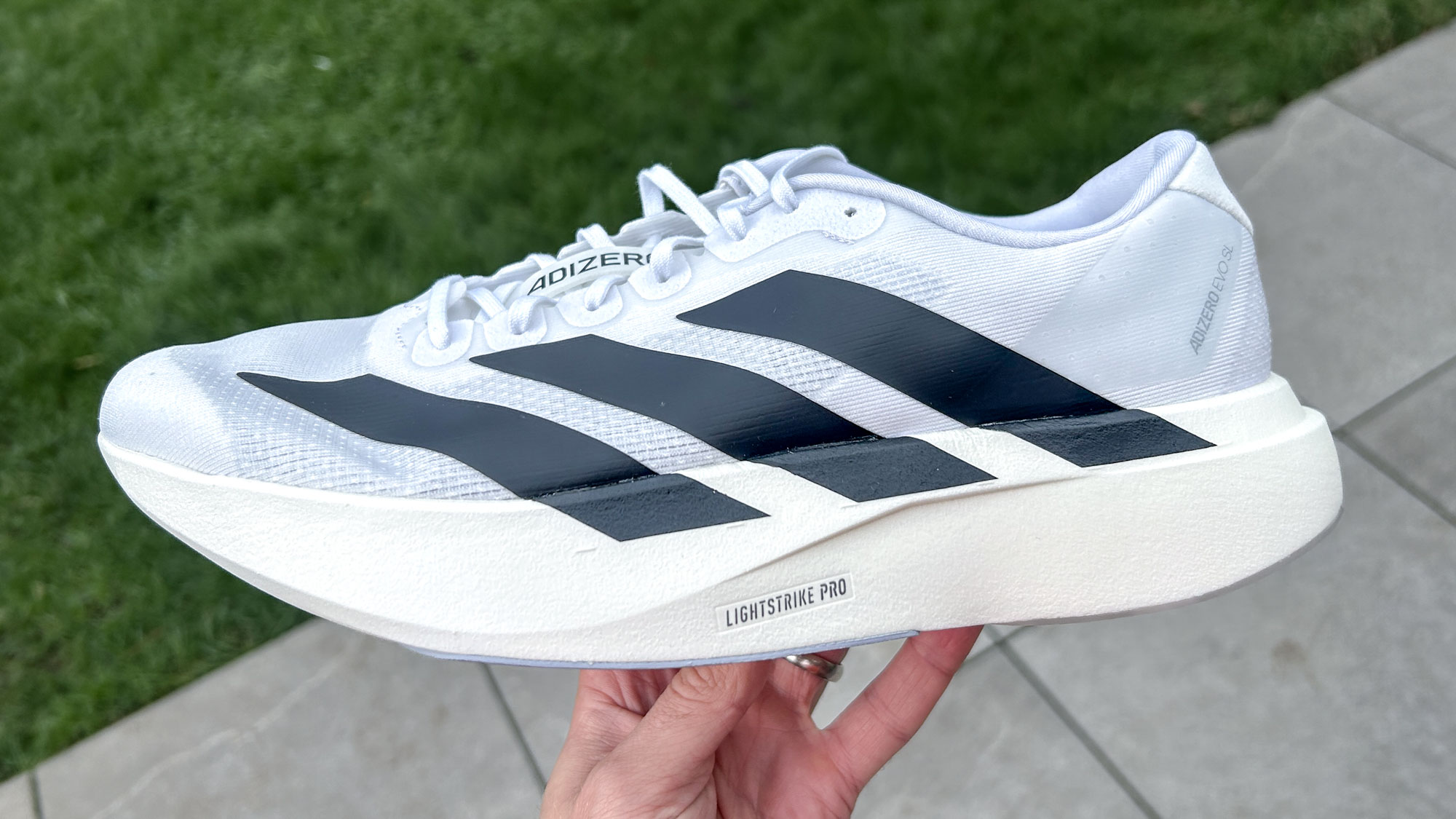
The Adidas Adizero Evo SL initially launched in limited numbers in October 2024 before its full release in March 2025 in the U.S. (February in the U.K.). It costs $150 in the U.S. and £130 in the U.K. which is good value for such a versatile shoe with Adidas’ Lightstrike Pro superfoam in its midsole.
Adidas Adizero Evo SL review: design and fit
The Adidas Evo SL is set to launch in three colors including the white and black shoe I tested. It’s impressively lightweight at 7.9oz in my US men’s size 9.5, especially considering the high stack height of 39mm at the heel and 33mm at the forefoot, which gives the shoe a 6mm drop.
I found that the shoe fit me well in my normal running size. Shoes in the Adidas Adizero range often come up a bit narrow and tight, but the Evo SL is fairly roomy and also a bit more padded around the heel than others like the Adidas Boston 12.
Upper
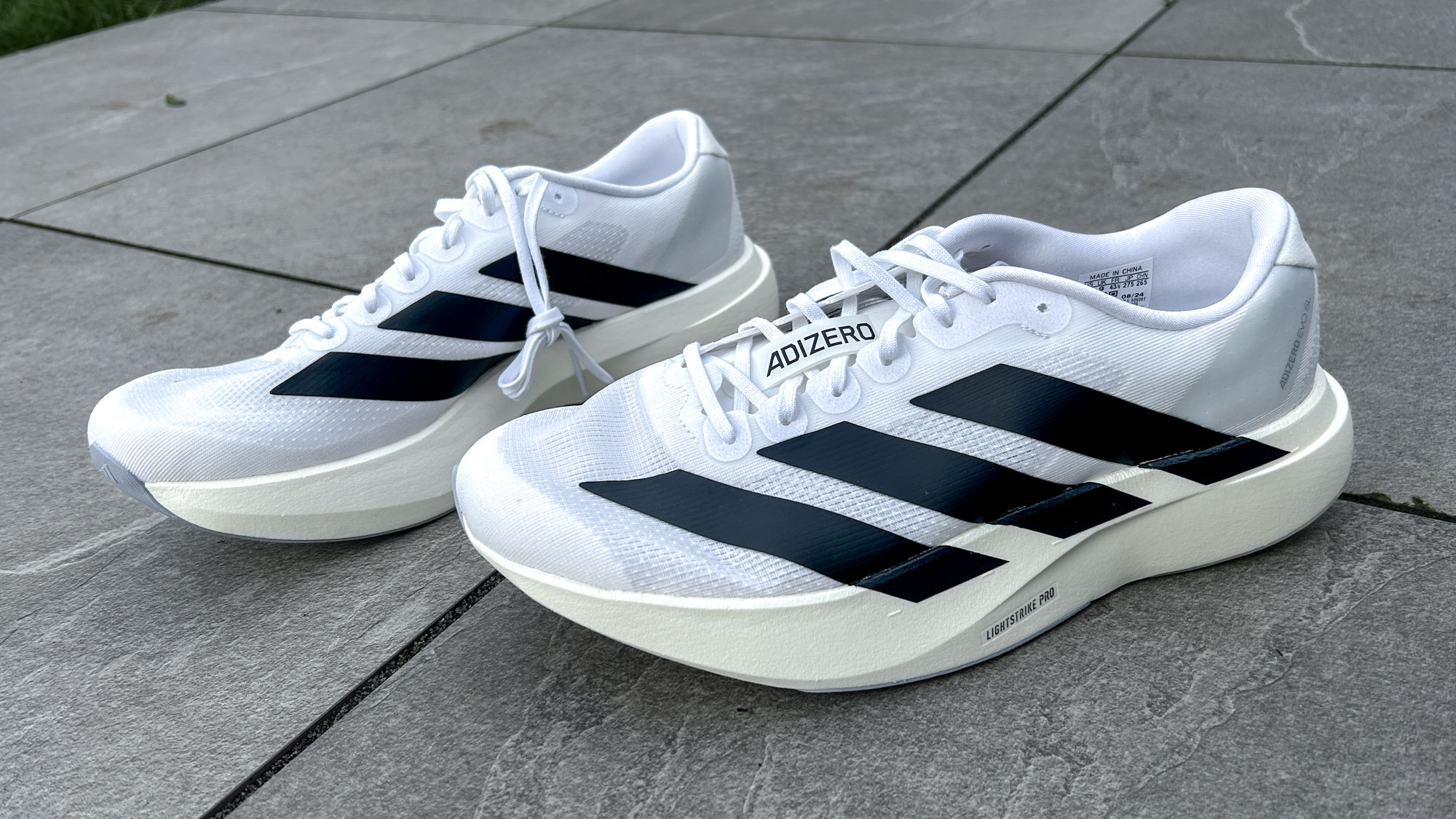
The Adidas Adizero Evo SL has a lightweight and breathable mesh upper that has just enough padding to make the shoe comfortable for regular use. The lockdown is still secure enough to use the shoe for fast runs without any slippage, but it’s a more relaxed fit than you get on racing shoes or many plated trainers.
As someone who found the uncomfortable upper on the Adidas Boston 12 to be the only real drawback of the shoe, the extra padding and slightly looser feel of the Evo SL is welcome, and makes it more enjoyable to pull on for daily runs.
Midsole
The midsole of the Evo SL is made from Adidas’s springy Lightstrike Pro foam, which is the best foam in the brand’s line-up though the exact make-up of the material varies between shoes. This feels like the firmer version of Lightstrike Pro used in the Adidas Adizero Adios Pro 3 racer, as opposed to the softer version in the Pro 4 and Pro Evo 1.
This firmer feel means the Evo SL is still quite stable for a high stack shoe, though it wouldn’t be one I recommend to runners who overpronate. There is a sharp forefoot rocker on the shoe to aid faster turnover, with the design of this rocker inspired by the Pro Evo 1 racer.
Outsole
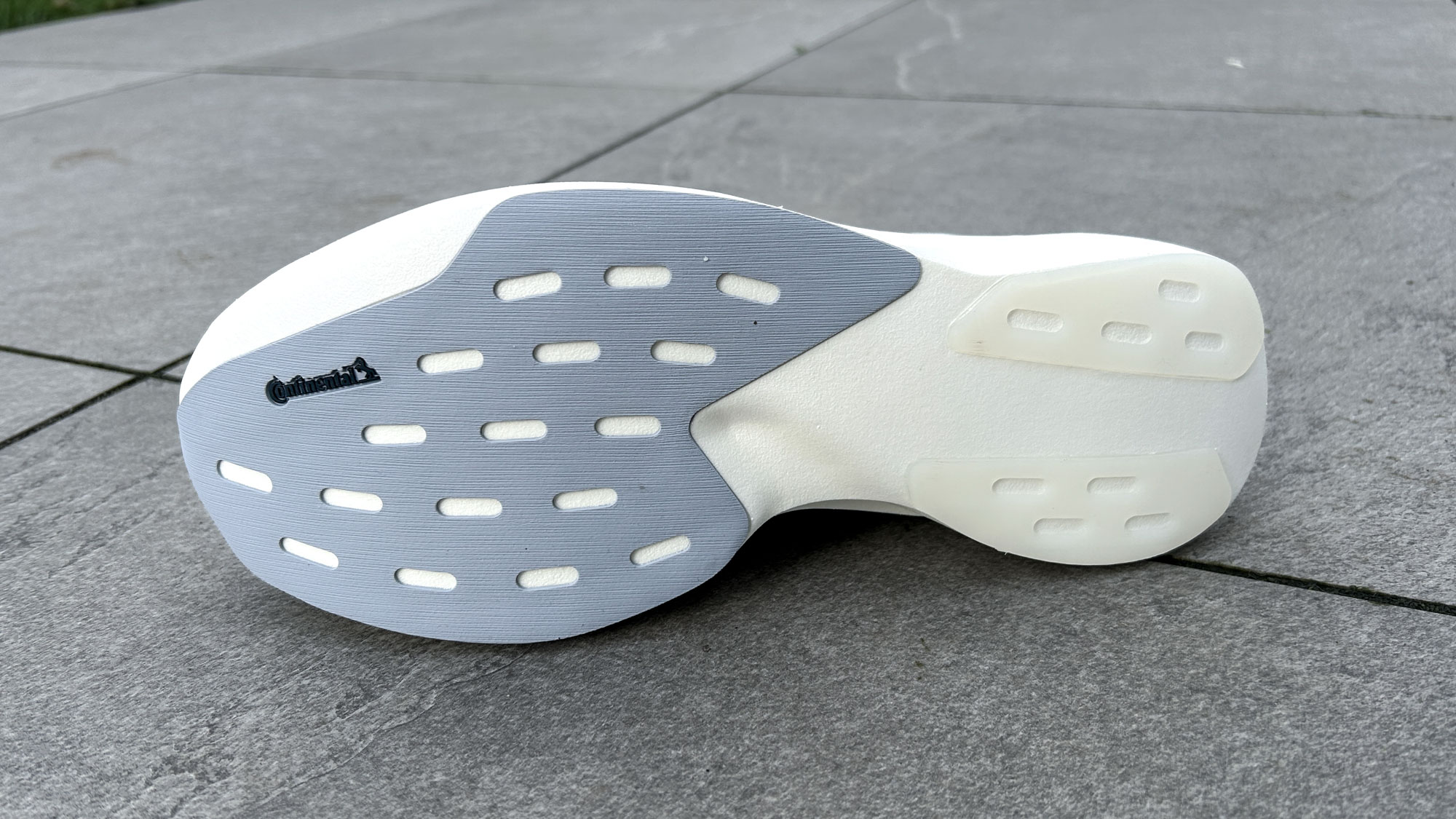
Unsurprisingly for such a light shoe, the Adizero Evo SL doesn’t have the thickest or most extensive outsole coverage, but Continental rubber under the forefoot delivers reliable grip while Adidas’s Clear Rubber is used in patches at the heel to increase traction and durability there.
Adidas Adizero Evo SL review: running performance
If I was to design my own dream daily trainer from scratch, it would look a lot like the Adidas Adizero Evo SL. A lightweight, versatile shoe with a generous stack of superfoam in the midsole and a fast rocker, with a thin but comfortable upper. As a result it’s perhaps not surprising that I loved running in it.
The ride is springy out of the box, but softens after the first 20 miles or so and gets more comfortable and bouncy. There is a good amount of cushioning at the heel, and then the rocker design pushes you onto your forefoot and off your toes.
As a runner with a high cadence I appreciated the light weight of the shoe, which makes it easier to keep my legs turning over during longer efforts.
Although you do get a bit more propulsion from a plated shoe — something I checked by doing a track workout where I did reps in both the Evo SL and a carbon plate shoe — the Evo SL is still a good option for fast runs – I’ve done tempo and interval sessions in it and enjoyed it for both.
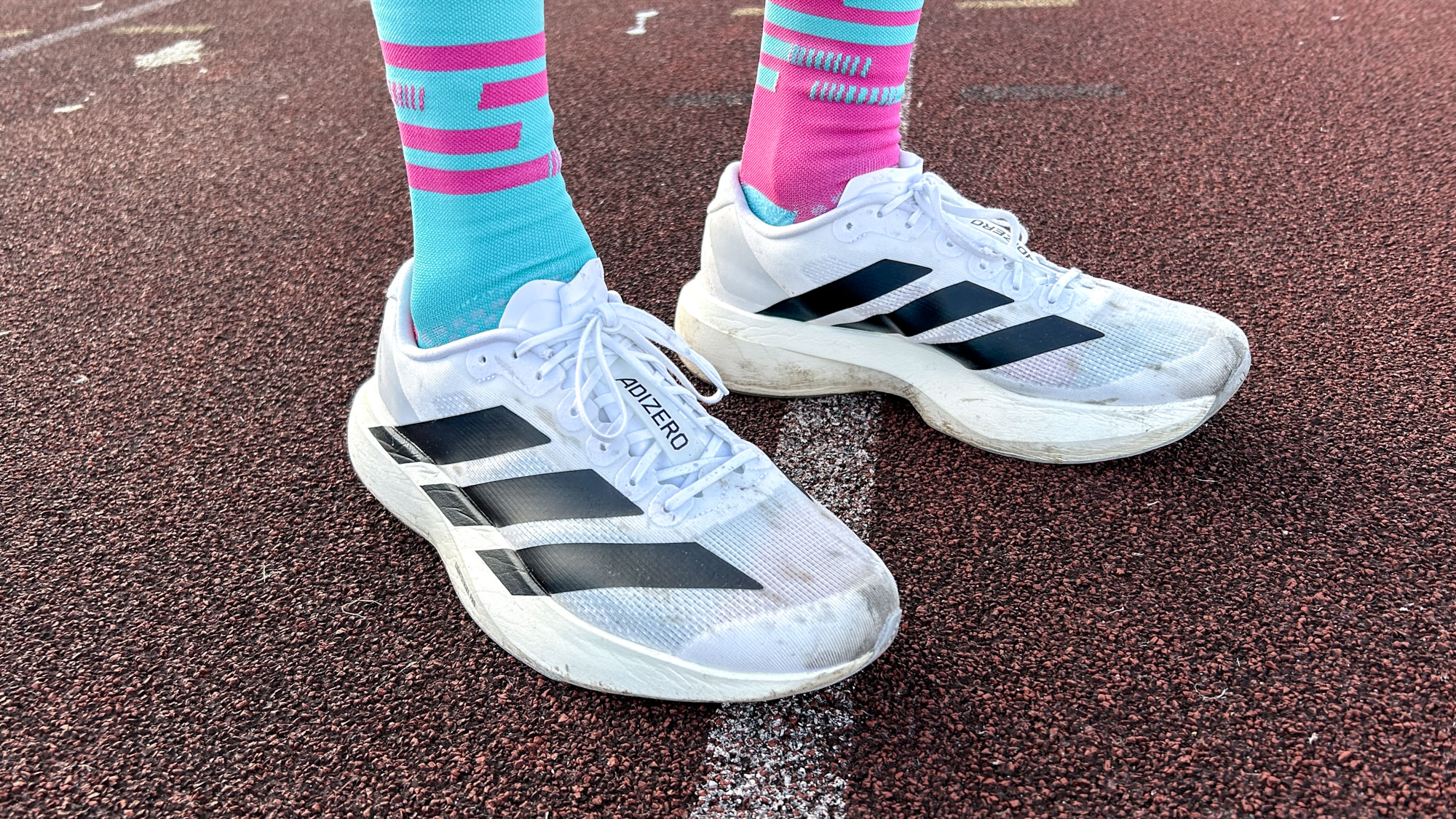
It also has the comfort for more relaxed efforts, even extending to short recovery runs. I’m not sure I’d use it much myself for longer easy runs, because it’s not the most stable shoe and the rocker pushes you to run fast, but the Evo SL can handle most paces well and I found it ideal for the progression runs I do a lot of during marathon training.
The Evo SL reminded me of other simple, lightweight shoes I’ve loved over the past year like the Hoka Mach 6 and New Balance Rebel v4, but has a bit more bounce in it thanks to its impressive midsole foam. I think it can even rival the excellent, and much more expensive, Asics Superblast 2 for the title of most versatile plate-free shoe, though the Asics is more stable for long runs.
Should you buy the Adidas Adizero Evo SL?
The Adidas Adizero Evo SL is one of my favorite running shoes and certainly worth considering as a lightweight daily trainer that can handle almost any kind of run. It fits well in a shoe rotation as a fast trainer, but can be used as an all-rounder too if you find it stable enough for easy runs.
It’s a good alternative to super-trainers like the Hoka Mach X2 or Saucony Endorphin Speed 4 for those who don’t want to train in a plated shoe, or don’t want to spend big on their trainer, and I think it’s better than any of its lightweight plate-free rivals like the Mach 6 and Rebel v4.
I also prefer it to the Asics Superblast 2 for fast runs, though the Superblast’s greater stability and higher stack makes it a better all-rounder since it’s more comfortable for long, easy runs. I would pick the Evo SL over the Adidas Boston 12 too, because it has a more comfortable upper and feels as fast and more comfortable than the Boston, which has rods in the midsole.

Nick Harris-Fry is an experienced health and fitness journalist, writing professionally since 2012. He spent nine years working on the Coach magazine and website before moving to the fitness team at Tom’s Guide in 2024. Nick is a keen runner and also the founder of YouTube channel The Run Testers, which specialises in reviewing running shoes, watches, headphones and other gear.
Nick ran his first marathon in 2016 after six weeks of training for a magazine feature and subsequently became obsessed with the sport. He now has PBs of 2hr 27min for the marathon and 15min 30sec for 5K, and has run 13 marathons in total, as well as a 50-mile ultramarathon. Nick is also a qualified Run Leader in the UK.
Nick is an established expert in the health and fitness area and along with writing for many publications, including Live Science, Expert Reviews, Wareable, Coach and Get Sweat Go, he has been quoted on The Guardian and The Independent.
